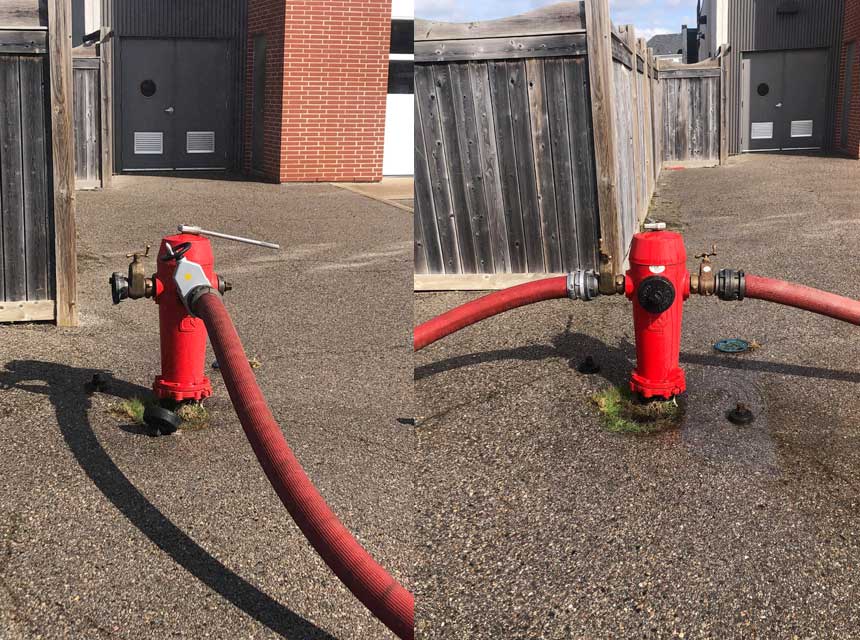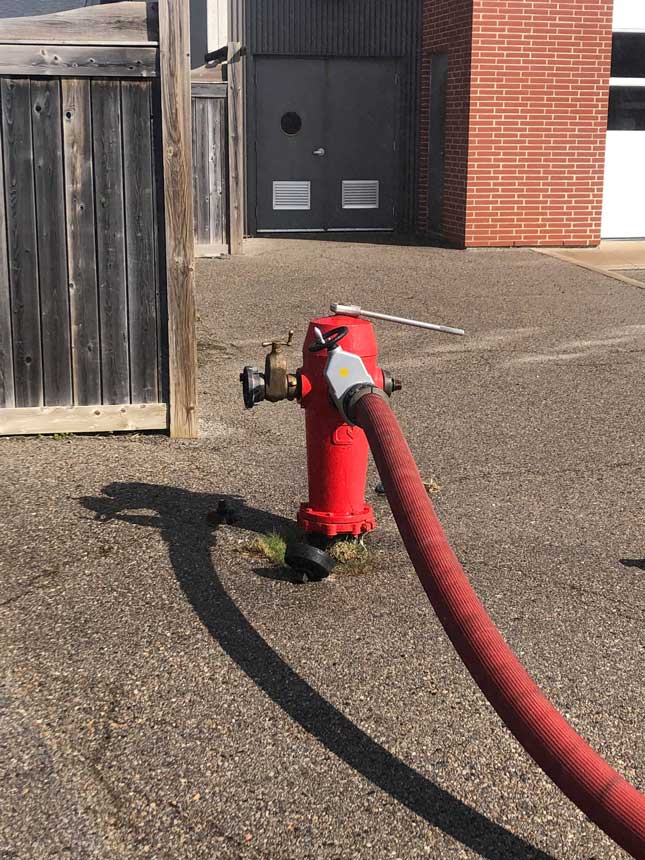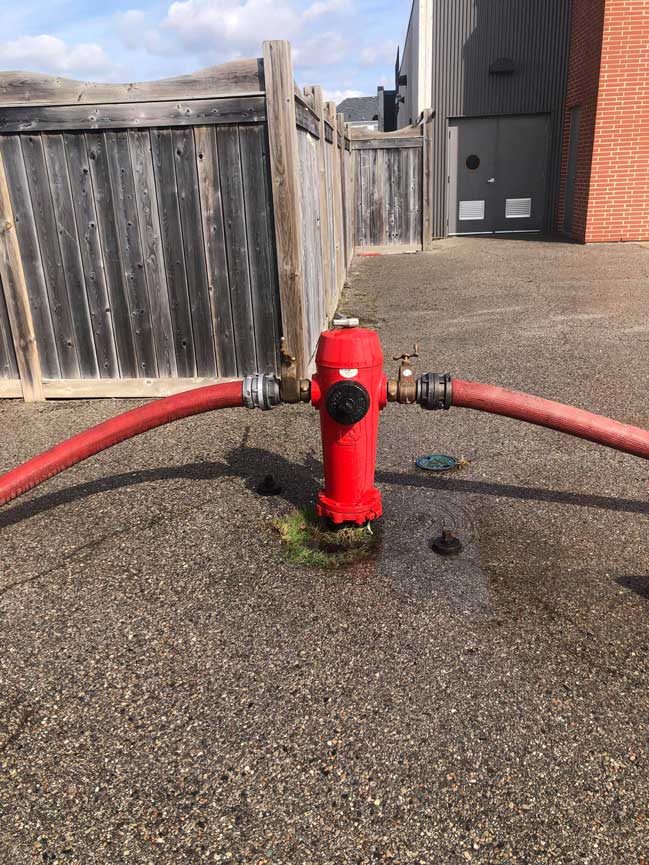
In areas where we have the potential for freezing conditions, there will be dry barrel hydrants as opposed to wet barrel hydrants in the southern climates. A problem that can arise when using a dry barrel hydrant is the operating stem breaking. The operating stem is the part that connects the main valve below ground (around four feet below) to the stem nut on top of the hydrant. Excessive pressure exerted on the operating stem (around four feet long) can cause it to snap due to cold weather, old age, poor maintenance, or just too much force being used.
When the operating stem breaks, the hydrant is out of service and, depending on which position the main valve is in, the hydrant will either be stuck open or closed. If the hydrant is stuck closed, there is no real problem. If it is stuck open, however, we will have nonstop water flowing.
When firefighters’ supply lines are attached from the hydrant to the apparatus pump intake and the hydrant is stuck open, the apparatus is now committed to the hydrant with no way of taking the hose off safely. One method to alleviate this problem is to use gate valves on the hydrant discharges. Whether you are using a 2 ½-, four-, or a five-inch supply line, attach a gate valve first, and then attach the supply line to it. Doing so will allow you to safely isolate a hoseline for removal in case the hydrant becomes stuck open.
When initial operations begin on the fireground with either an offensive or defensive attack, securing the water source is a vital part of it. Usually when the hydrant is secured, only one supply line will be attached going to the pumping apparatus. This one line may be enough, but what happens if another supply line needs to be added?
When using a wet barrel hydrant there is no problem, simply attach the supply line and open the stem nut to that discharge port. However, on a dry barrel hydrant, this cannot be duplicated. Once the hydrant has been opened and water is flowing through the initial supply line, firefighters cannot remove any of the caps and simply add a hoseline. This is due to the excessive pressure being exerted on the inside of the cap, which would turn it into a projectile if it were loosened. The hydrant would have to be closed, the pressure drained, the next cap removed, supply line attached, and then reopened.
Adding a gate valve to each port or just one additional port will allow a firefighter to add another supply line while the hydrant is still open and operating without compromising safety. This will save time and frustration for the operation.
Whenever a dry barrel hydrant is secured, gate valve all ports. Here is a training drill that can be used to help reinforce the idea of adding gate valves to all ports.


Drill
Equipment needed: Hydrant bag, fire apparatus, dry barrel hydrant, and gate valves.
Goal: To practice securing a hydrant for a water source by adding gate valves to all ports.
- Check hydrant bag to ensure there are enough gate valves for at least one extra port. Ensure that the large hose supply line has the attached gate valve to it for ease of connection and deployment.
- Using a hydrant, each member will exit the static apparatus and grab the department required equipment to secure a hydrant.
- Once at the hydrant, while going through the specific department operational procedures, the large supply line will be attached using the appropriately sized gate valve.
- Once the large supply line has been secured, the second gate vale will be added to the smaller port (2 ½-inch). If there are enough gate valves, the third 2 ½-inch port can also be gated.
- One all ports have been gated, the hydrant can be fully opened and charged.
- Test the theory by adding in a second supply line to one of the secondary gated ports.
Key Points
- Have the large supply hose already preconnected to the gate valve.
- Have at least one 2 ½-inch port secured with a gate valve. If a third valve is available, then gate all three ports.
- Once the hydrant is charged, a secondary supply line can be charged without shutting down the hydrant.

Mark van der Feyst has been in the fire service since 1999 and is a full-time firefighter in Ontario, Canada. He is an international instructor teaching in Canada, the United States, and India, and at FDIC. Van der Feyst is a local level suppression instructor for the Pennsylvania State Fire Academy. He is also the lead author of Residential Fire Rescue (Fire Engineering Books & Video).
MORE MARK VAN DER FEYST
Firefighting Basics: Master Streams, Part 1 | Part 2
Back to The Basics: Elevated Master Streams
Back-to-Basics Truck Company Ops: Search Hazards

